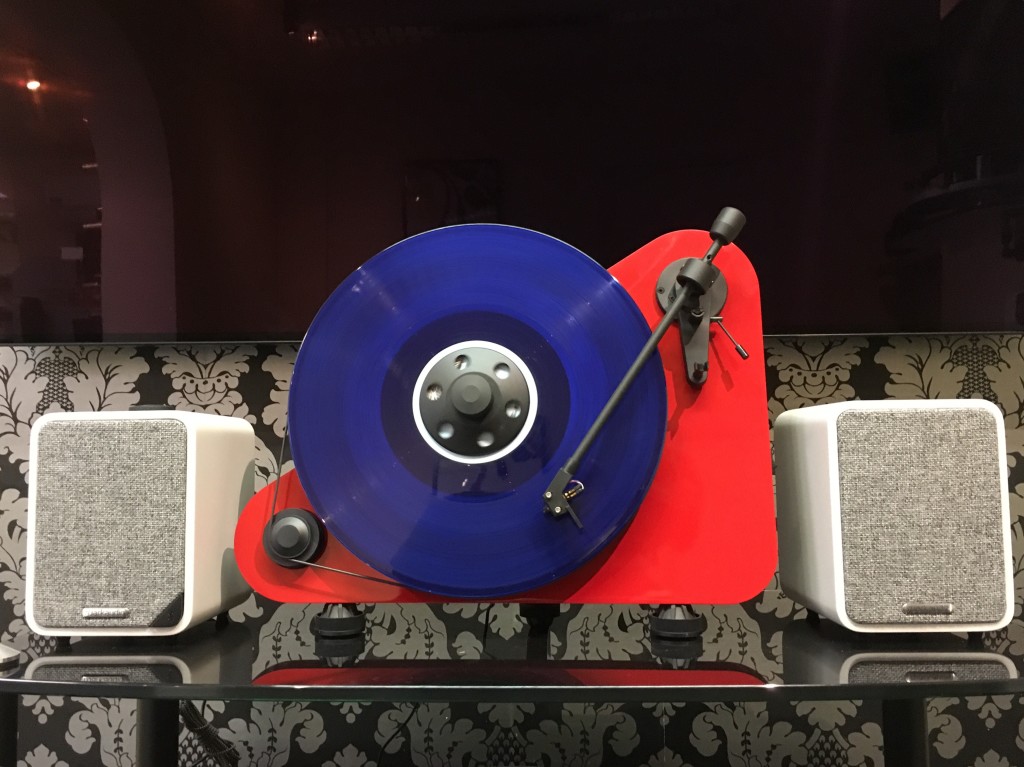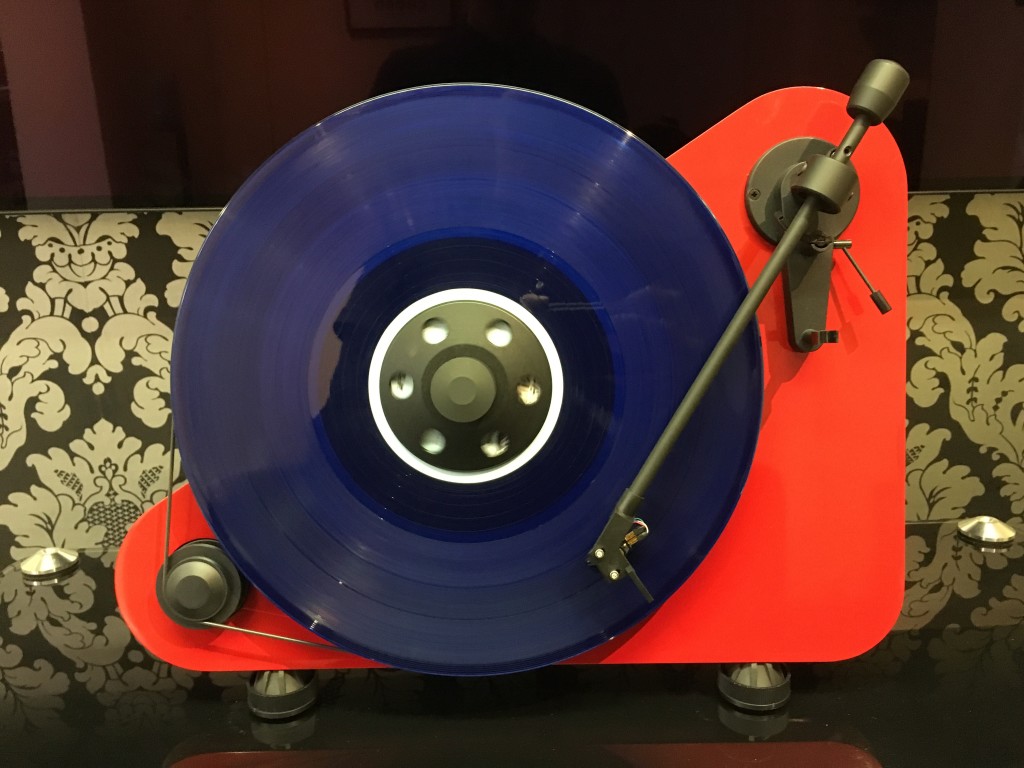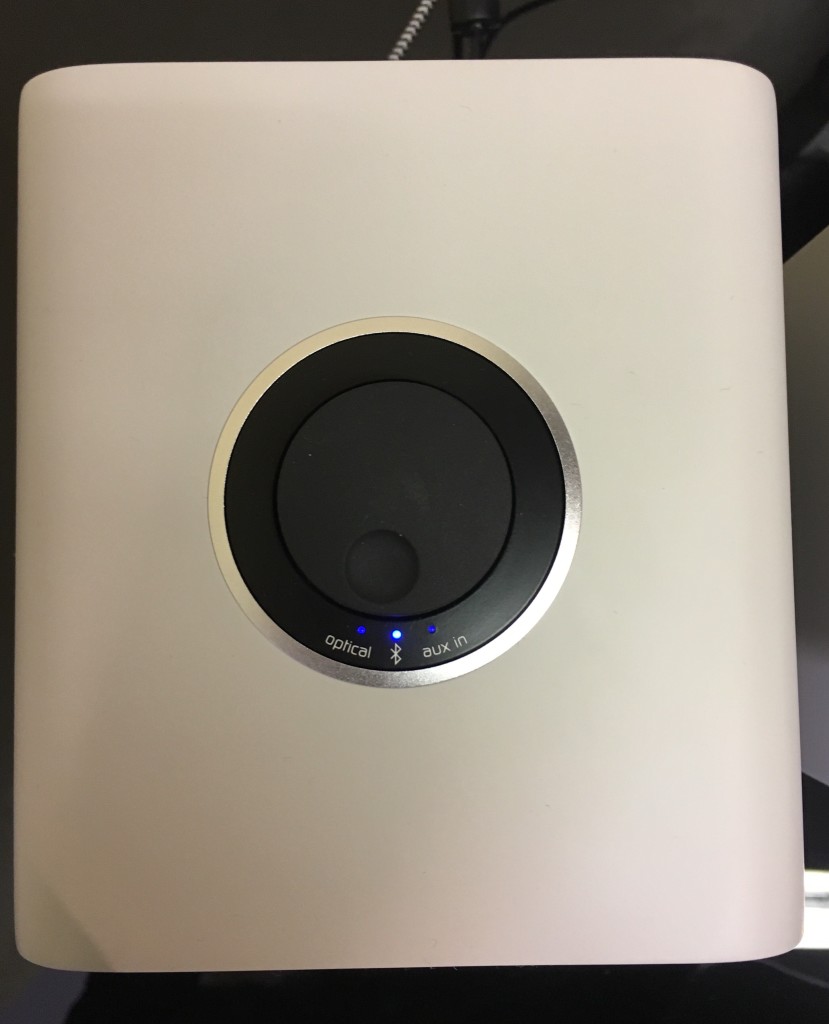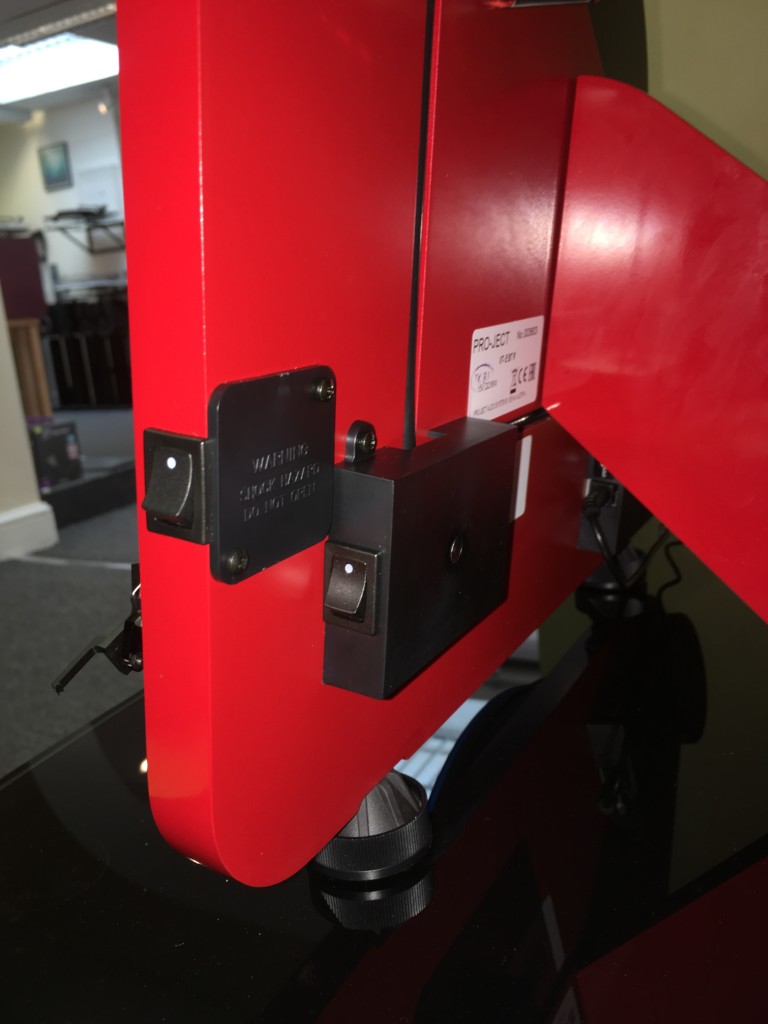
The VT-E vertical Bluetooth turntable is the first of its kind, at least that we've seen, to offer such an optimal level of functionality and still retain a brilliant sound quality. When combined with the Ruark Audio MR1 Mk 2 loudspeakers, the result is a highly innovative, high-fidelity vinyl player with minimal cabling and a really compact profile. This guide seeks to help simplify the process of pairing your VT-E BT turntable and Ruark MR1 Mk2 speakers together for wireless playback. The ProJect VT-E BT Turntable and Ruark Audio MR1 Mk 2 is available from our website as a complete set order package.
Assembling the Ruark Audio MR1 (Mark II) Active Speakers.
Firstly, unbox your Ruark Audio MR1 Mark 2 active loudspeakers and position them within your listening room to your preference. One speaker acts as the master unit and contains the integrated amplifier, a supplied cable then feeds the slave speaker to form a stereo pair. Once the speakers are unboxed, powered up and in situe - it's time to begin assembling your ProJect VT-E BT turntable.
Assembling the ProJect VTE-BT Bluetooth Turntable.
Physical set-up of the turntable itself is easy and explained clearly with the supplied manual. The manual provides instructions on how to assemble the deck for both upright standing and wall-mount applications. Once you've put the turntable together, the next process is pairing the VTE-BT to your Ruark speakers wirelessly via Bluetooth. Note that it may be easier to pair the VTE BT and MR1 Mk2s before wall-mounting the turntable.

Bluetooth pairing and set-up.
It's important to remember that while both units are 'Bluetooth capable', they offer two very different functions. The VT-E BT features a Bluetooth transmitter, while the Ruark MR1 Mk 2 possesses a Bluetooth receiver. As the terms would suggest, one is only able to send a Bluetooth and the other is only able to receive a Bluetooth signal.
The VT-E BTs transmitter will simply pair to the first Bluetooth receiver it can find. For this reason, the first step before switching on your turntable is to turn off any other Bluetooth receiving devices that may otherwise fetch the VTE BT's signal before the Ruark MR1s can get hold of it. This means turning off the Bluetooth of any mobile phones, iPads, etc in the area, as well as making sure any other Bluetooth capable speakers and systems (such as televisions) are switched off fully so that when the VT-E BT begins to search for devices to pair too - it is only able to see, and therefore connect to, the Ruark Audio MR1 Mk2s. This is true when connecting the VTE BT to any Bluetooth speaker.

With the Ruark Audio MR1 Mark 2s powered up, select the Bluetooth input by pushing the volume control knob downwards as a button. This will cycle between the Mr1s possible inputs as indicated by the LEDs below the selector. Once you've landed on the Bluetooth input, a blue LED will begin flashing to signal that it is now seeking a Bluetooth signal from a transmitter to pair to.

Switch on the VT-E's main motor and the turntable will begin spinning. You will notice that a secondary module on the back of the deck has its own on/off switch. This module is the Bluetooth transmitter, so once the turntable is spinning - switch the transmitter on and it will begin to look for a receiver set 'ready to pair', such as our MR1s, as shown by their flashing blue LED light.
Providing there are no other Bluetooth receiving devices in the nearby area to confuse it - the record being played on the VT-E BT should be heard clearly from the Ruark MR1 Mark 2 loudspeakers wirelessly to wherever they are in the room.
Switching off the system.
When you have finished listening, simply switch off the turntable and speakers. When powering them back up later, they should see each other quickly and be ready to play between each other without the requirement of re-pairing. If they don't seem to find each other though, simply disconnect the VTE-BT from the mains and begin the repairing process again (making sure you switch off other Bluetooth receiving devices).
